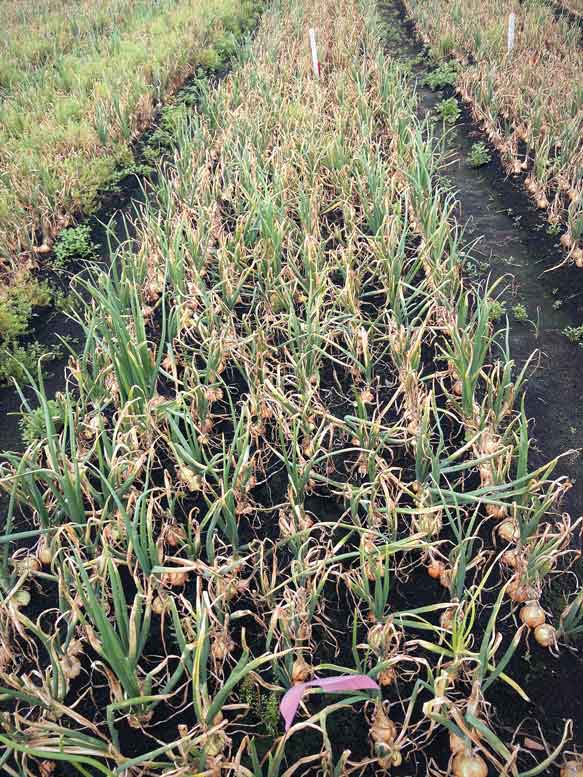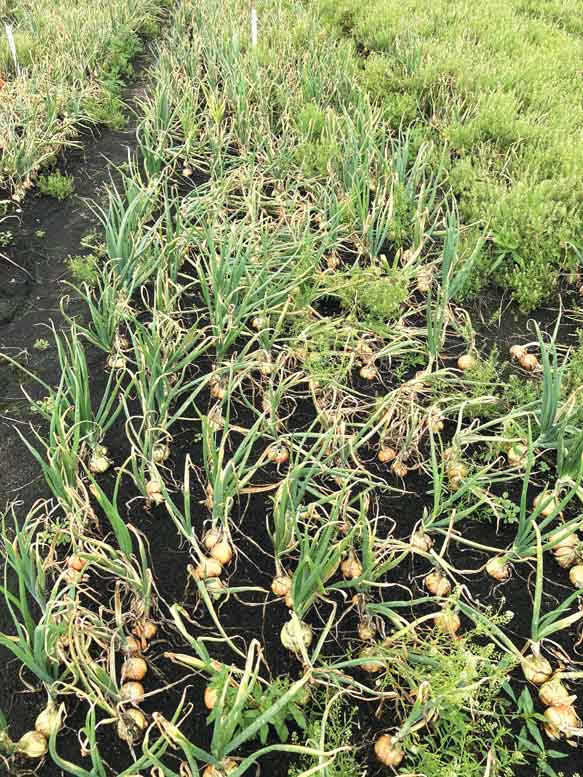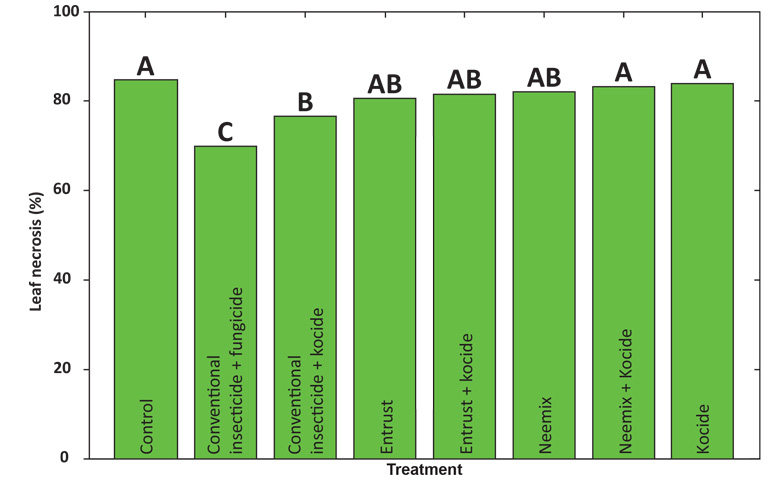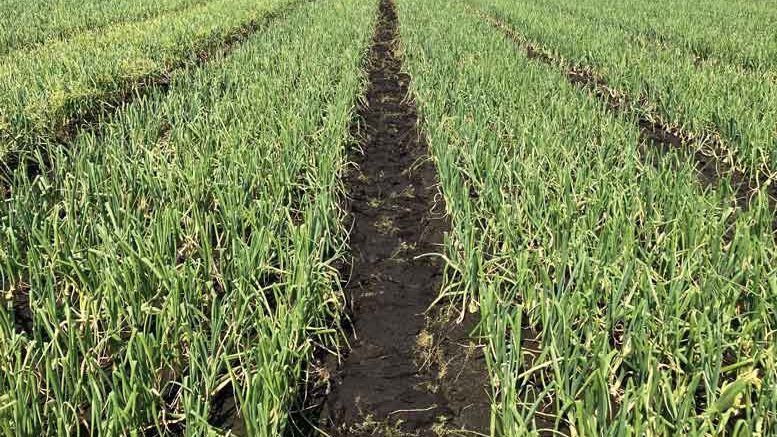|
Click to listen to this article
|
Onion Thrips and Stemphylium Leaf Blight Management
By Natalie Constancio, Doug Higgins, Mary Hausbeck and Zsofia Szendrei, Michigan State University
A potential interaction between thrips and Stemphylium leaf blight is prompting researchers to evaluate management strategies that can control both.

Onion thrips feed on leaves, which results in scarring, thus reducing the amount of green tissue on the plant. This compromises the plant’s ability to photosynthesize, resulting in yield loss for growers. In addition to causing feeding damage, onion thrips can spread many plant pathogens.
Onion thrips are known vectors of viral and bacterial pathogens, but they may also be vectors of fungal plant pathogens. In laboratory experiments, onion thrips can pick up fungal spores on the outside of their body and transfer them through physical contact.
Recently, the fungal pathogen Stemphylium vesicarium, the causal agent of Stemphylium leaf blight, became an important plant pathogen in Michigan onion fields. Symptoms of Stemphylium include tan, water-soaked lesions on the leaves, and eventually excessive leaf dieback occurs. It is important to manage Stemphylium leaf blight because progression of the disease results in severe yield reduction. Infected onions may also be vulnerable to storage rot due to opportunistic secondary pathogens.

Onion thrips can vector Stemphylium spores in the laboratory, but more field research is needed to better understand the relationship between thrips and Stemphylium under commercial field conditions.
Onion thrips are managed by applying insecticides based on an action threshold and rotating the insecticide classes to prevent the development of insecticide resistance. Foliar fungicide applications begin early in the season and are continued as weekly sprays to prevent pathogens from entering the leaves. Increasingly, research provides evidence that onion plant pathogens can be vectored by thrips and that the management of thrips and Stemphylium should be considered simultaneously.

Pesticide Trial
In the 2021 growing season, researchers at Michigan State University tested a combination of organic (OMRI approved) and synthetic (conventional) fungicides and insecticides to determine their ability to manage both onion thrips and Stemphylium leaf blight. This foliar spray trial was conducted in a commercial onion field in Michigan with eight treatments (Fig. 1).
The two OMRI insecticides tested were Neemix and Entrust, and the OMRI fungicide was Kocide, all applied weekly. The conventional insecticide program consisted of Movento, Minecto Pro, Radiant and Lannate+Warrior, each applied twice seven days apart before rotating to the next insecticide. The conventional fungicide program consisted of alternating weekly Miravis Prime and Bravo WS.

Fungicide and insecticide applications started on June 15, 2021. Insecticides were applied at the one thrips/leaf threshold detected on June 11, 2021. Pesticides were tank mixed with a non-ionic surfactant.
Trial Results

Organic insecticides did not effectively control onion thrips populations. The thrips pressure in these plots was similar to that in the no-spray control plots. Treatments without an insecticide did not suppress onion thrips populations.
Conventional insecticides suppressed thrips numbers below the one thrips/leaf threshold (Fig. 1). The combination of conventional insecticides and fungicides controlled onion thrips populations best (Fig. 1). The second best performing treatment was the combination of a conventional insecticide with an organic fungicide, which reduced thrips by about 60 percent compared to the control and organic treatments.

Disease pressure from Stemphylium leaf blight was high, with an average of 67.8 percent leaf necrosis on Aug. 17 (final disease rating date) in plots receiving a combination of conventional fungicide and insecticide treatments. Organic insecticides did not limit Stemphylium leaf blight symptoms. The percent leaf necrosis was similar to the no-spray control plots (Fig. 2). The combination of conventional fungicides and insecticides significantly reduced Stemphylium leaf blight symptoms by about 10 percent compared to when an organic fungicide was used in combination with the conventional insecticides (Fig. 2).
The difference in thrips numbers between the conventional insecticide treatment with organic versus conventional fungicides, while not statistically significant, points to a potential interaction between thrips and Stemphylium leaf blight. This is currently being investigated by researchers.
Our results highlight the need for an effective multiple pest management strategy to control both onion thrips and Stemphylium leaf blight.
Authors’ note: We thank the cooperating onion grower who allowed us access to their farm for the spray trial. Funding for this research was provided by the Organic Transitions Program Grant #2019-03518 from the USDA National Institute of Food and Agriculture.

